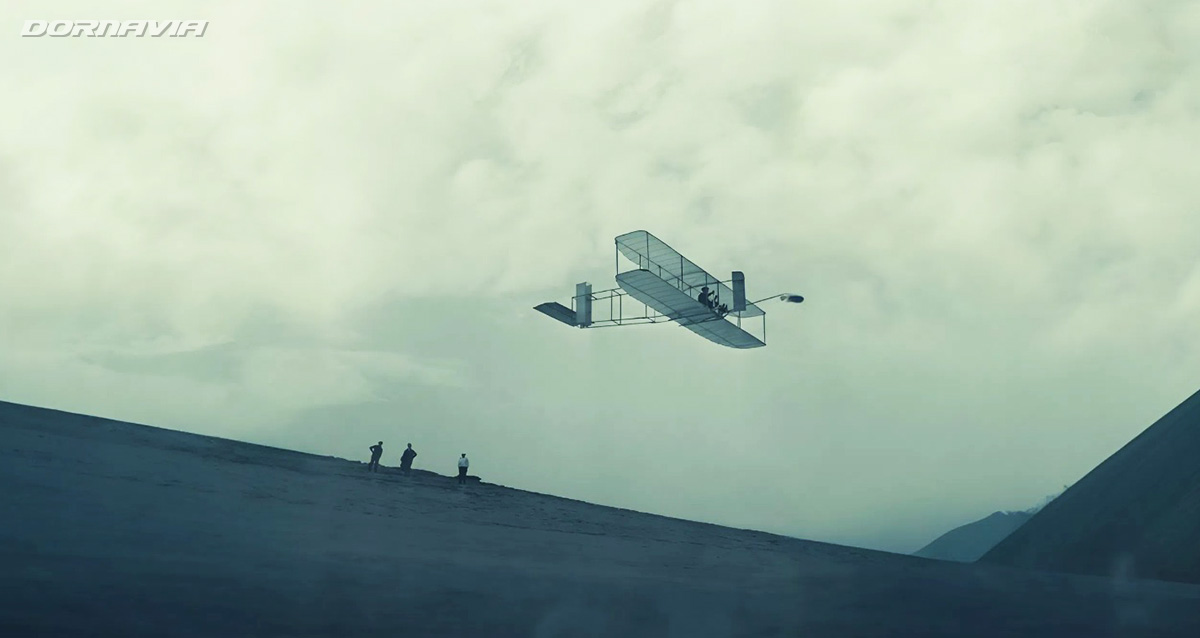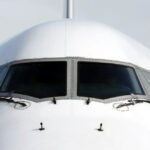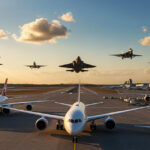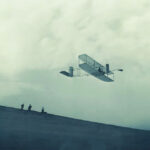The dream of flight has been rooted in the human imagination for millennia. From ancient myths to the ingenious designs of inventors, humanity has always looked to the sky and the birds with a deep sense of longing. This article is a journey through history to see how this age-old dream transformed into one of mankind’s greatest technological achievements. If in our last post we became familiar with the principles of flight, now it is time to understand how humans discovered and harnessed these principles.
Ancient Dreamers and the First Sparks
Long before the science of aerodynamics took shape, flight was born in stories and legends. The most famous of these is the story of Icarus in Greek mythology, who flew too close to the sun with wings made of feathers and wax, only to fall. This story was a symbol of both the grand ambition and the unknown dangers of flight.
But the first scientific look at flight took shape centuries later in the creative mind of Leonardo da Vinci during the Renaissance. Through his meticulous study of bird anatomy, he sketched hundreds of designs for flying machines, including an ornithopter (a wing-flapping machine) and a design resembling a modern helicopter. Although none of his designs were built in his time, his notebooks represent the first attempts to understand the engineering of flight.
The Age of Balloons and Airships (18th & 19th Centuries)
Humanity’s first real success in overcoming gravity came not from imitating birds, but by using a simpler principle: hot air is lighter than cold air. In 1783, the Montgolfier brothers in France created the first successful manned flight in history by building a massive balloon from fabric and paper and heating the air inside it with a fire. This achievement astonished the world, and the era of lighter-than-air flight officially began.
A short time later, French physicist Jacques Charles took a major step in the evolution of balloons by replacing hot air with hydrogen gas, which was much lighter. However, balloons had a major weakness: they were at the mercy of the wind and could not be steered. This challenge led to the birth of airships, or dirigibles. These giant flying vessels, the most famous of which were the German Zeppelins, had engines and rudders, giving them steerability and making the first intercontinental commercial air travel possible.
The Dawn of Heavier-Than-Air Flight (Late 19th & Early 20th Centuries)
Despite the success of balloons, the true dream was for a controlled, sustained flight like that of a bird. This dream was pursued by pioneers who believed in heavier-than-air flying machines.
Sir George Cayley, an English engineer, is rightly called the “Father of Aerodynamics.” In the early 19th century, he was the first to identify and separate the four fundamental forces of flight: lift, drag, weight, and thrust. His designs for gliders provided a scientific foundation for future generations.
Later that century, Otto Lilienthal of Germany took the practical knowledge of flight to a new level by building and testing over two thousand gliders. Through repeated flights from hills, he proved the importance of weight-shifting and control surfaces. Although Lilienthal lost his life in one of these flights, his legacy inspired those who would take the final step.
That final step was taken on the morning of December 17, 1903, in Kitty Hawk, North Carolina. The Wright brothers, Orville and Wilbur, after years of systematic research, building a homemade wind tunnel, and countless experiments, achieved the first controlled, sustained, and powered flight in history with their aircraft, the Flyer. The first flight lasted only 12 seconds, but in those 12 seconds, the world changed forever.
The World Wars and the Golden Age of Aviation
Like many technologies, wars became a catalyst for the rapid advancement of aviation. In World War I, aircraft evolved from reconnaissance tools into deadly war machines called fighters, and aerial combat (the “dogfight”) was born.
The 1920s and 1930s are known as the “Golden Age of Aviation.” During this period, airshows, races, and new records captured the public’s imagination. Charles Lindbergh conquered the Atlantic in 1927 with his non-stop flight from New York to Paris, becoming a global hero. Amelia Earhart also became one of the most famous female aviators, breaking numerous records.
World War II brought an incredible leap in aviation technology. Metal monoplanes with powerful piston engines became the standard. But the most significant innovation of this era was the invention of the jet engine by Frank Whittle in Britain and Hans von Ohain in Germany. The world’s first operational jet fighter, Germany’s Messerschmitt Me 262, marked the end of the piston-engine era and the beginning of the jet age.
The Jet Age and New Horizons
After the war, jet technology quickly entered civil aviation. In 1947, Chuck Yeager broke the sound barrier for the first time in the rocket-powered Bell X-1. In the 1950s, aircraft like the Boeing 707 and the Douglas DC-8 revolutionized commercial air travel. Now, ordinary people could cover distances in a few hours that previously took weeks.
In the following decades, innovation continued. The Boeing 747, known as the “Jumbo Jet,” made air travel accessible to the masses with its high capacity. The Concorde, a supersonic transport aircraft, realized the dream of traveling at twice the speed of sound. Simultaneously, digital technologies dramatically increased flight precision and safety by replacing analog gauges with “glass cockpits” and introducing “fly-by-wire” systems.
The Sky Is No Longer the Limit
The history of aviation is a story of the triumph of human curiosity, courage, and innovation. A long and adventurous path has been traveled from the myths of Icarus to the Wright brothers’ 12-second flight and the modern airliners that carry hundreds of people across the globe.
Today, the sky is no longer a limit but a highway that connects nations and cultures. Looking to the future, with the emergence of technologies like electric aircraft, commercial spaceflight, and intelligent drones, it seems the most exciting chapters in the story of aviation are yet to be written.





